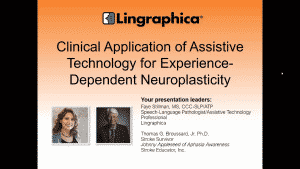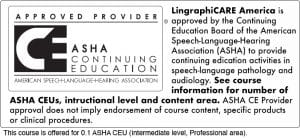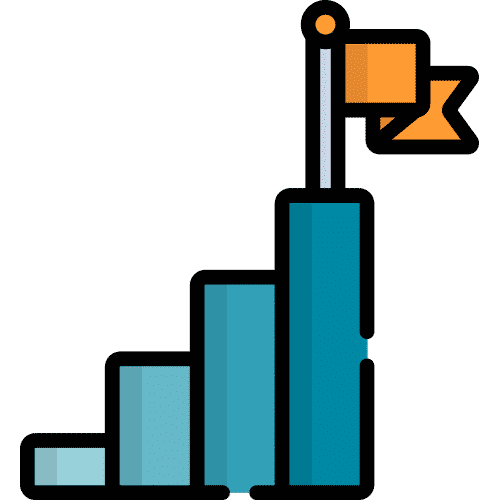 In our course on applying assistive technology to experience-dependent neuroplasticity, Speech Language Pathologists (SLPs) will learn about research that supports the provision of activities which infuse the principles of neuroplasticity. We’ll explore key aspects, including:
In our course on applying assistive technology to experience-dependent neuroplasticity, Speech Language Pathologists (SLPs) will learn about research that supports the provision of activities which infuse the principles of neuroplasticity. We’ll explore key aspects, including:
-
- identifying three research-based factors supporting the need to induce and leverage the principles of neuroplasticity
- discuss four different scenarios in which technology is utilized for best practice in experience-dependent neuroplasticity
- identify three simple actions SLPs can take to utilize the principles of neuroplasticity in treatment
Lingraphica’s course “Clinical Application of Assistive Technology for Experience-Dependent Neuroplasticity” begins by defining neuroplasticity, or the brain’s ability to adapt, alter, and reorganize itself through the development of new neural connections. This occurs throughout a person’s life, and it allows neurons to compensate for injury or disease as they adjust their activities in response to new situations or stimuli.
In this course, we will explore the research behind the principles of neuroplasticity, as well as unpack each of its ten principles. These include specificity, as well as the significance of intensity, salience, time, and age. We will also explore the key concepts of transference and interference as they apply to clinical treatments.
Following a review and exploration of what neuroplasticity is and how to leverage the principles to maximize learning, re-learning, and growth, we will discuss low-tech to high-tech clinical applications of assistive technology as it relates to experience-dependent neuroplasticity. Dr. Tom Broussard, a stroke survivor and educator, will discuss the low-tech and no-tech options he used during his own recovery. These include keeping a diary, listening and recording, and using pictures or reading signs.

Finally, we will explore mid- to high-tech options, including Lingraphica’s family of SmallTalk apps. These apps can be used as orthotic tools and as a communication device, but they also have practical applications as a therapy tool to practice and improve speech and language therapy. We will also look at three different patient examples with a focus on high-tech AAC use and its role in goal setting and achievement. We provide real-world exercises to encourage implementation of the course information, including activities with varied modalities, salience exercises, and maintaining a focus on keeping track and feedback.
Clinical Application of Assistive Technology for Experience-Dependent Neuroplasticity
To learn more about assistive technology and its connections to experience-dependent neuroplasticity, watch our free CE course,
“Clinical Application of Assistive Technology for Experience-Dependent Neuroplasticity.”




